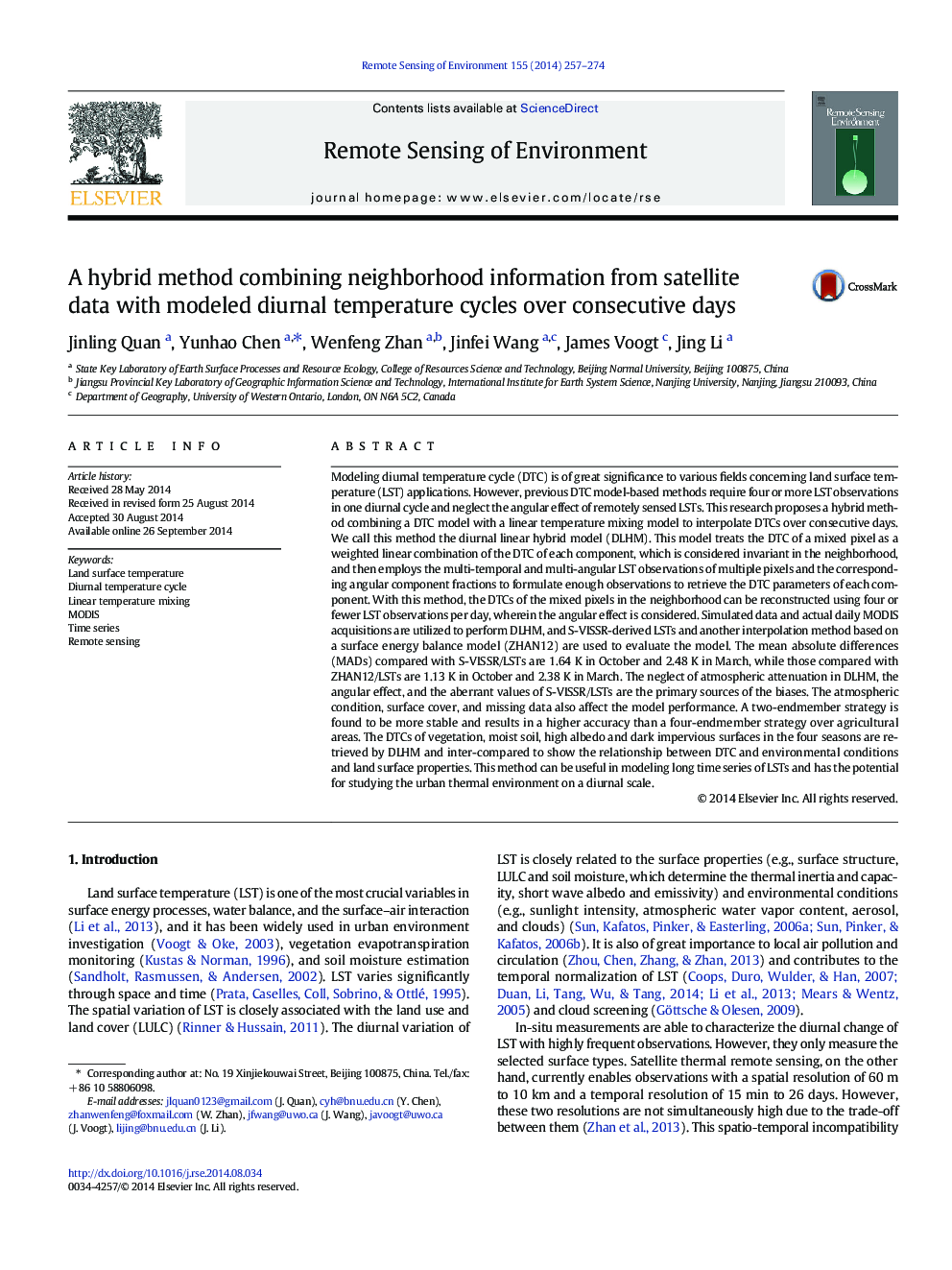| کد مقاله | کد نشریه | سال انتشار | مقاله انگلیسی | نسخه تمام متن |
|---|---|---|---|---|
| 6346617 | 1621245 | 2014 | 18 صفحه PDF | دانلود رایگان |
- Neighborhood information from satellite data are combined with modeled DTC.
- This method uses four or fewer LST observations and avoids the angular effect.
- DTCs were generated using MODIS/LSTs and evaluated by satellite & model LSTs.
- DTCs of different components in the four seasons were estimated.
Modeling diurnal temperature cycle (DTC) is of great significance to various fields concerning land surface temperature (LST) applications. However, previous DTC model-based methods require four or more LST observations in one diurnal cycle and neglect the angular effect of remotely sensed LSTs. This research proposes a hybrid method combining a DTC model with a linear temperature mixing model to interpolate DTCs over consecutive days. We call this method the diurnal linear hybrid model (DLHM). This model treats the DTC of a mixed pixel as a weighted linear combination of the DTC of each component, which is considered invariant in the neighborhood, and then employs the multi-temporal and multi-angular LST observations of multiple pixels and the corresponding angular component fractions to formulate enough observations to retrieve the DTC parameters of each component. With this method, the DTCs of the mixed pixels in the neighborhood can be reconstructed using four or fewer LST observations per day, wherein the angular effect is considered. Simulated data and actual daily MODIS acquisitions are utilized to perform DLHM, and S-VISSR-derived LSTs and another interpolation method based on a surface energy balance model (ZHAN12) are used to evaluate the model. The mean absolute differences (MADs) compared with S-VISSR/LSTs are 1.64Â K in October and 2.48Â K in March, while those compared with ZHAN12/LSTs are 1.13Â K in October and 2.38Â K in March. The neglect of atmospheric attenuation in DLHM, the angular effect, and the aberrant values of S-VISSR/LSTs are the primary sources of the biases. The atmospheric condition, surface cover, and missing data also affect the model performance. A two-endmember strategy is found to be more stable and results in a higher accuracy than a four-endmember strategy over agricultural areas. The DTCs of vegetation, moist soil, high albedo and dark impervious surfaces in the four seasons are retrieved by DLHM and inter-compared to show the relationship between DTC and environmental conditions and land surface properties. This method can be useful in modeling long time series of LSTs and has the potential for studying the urban thermal environment on a diurnal scale.
Journal: Remote Sensing of Environment - Volume 155, December 2014, Pages 257-274
